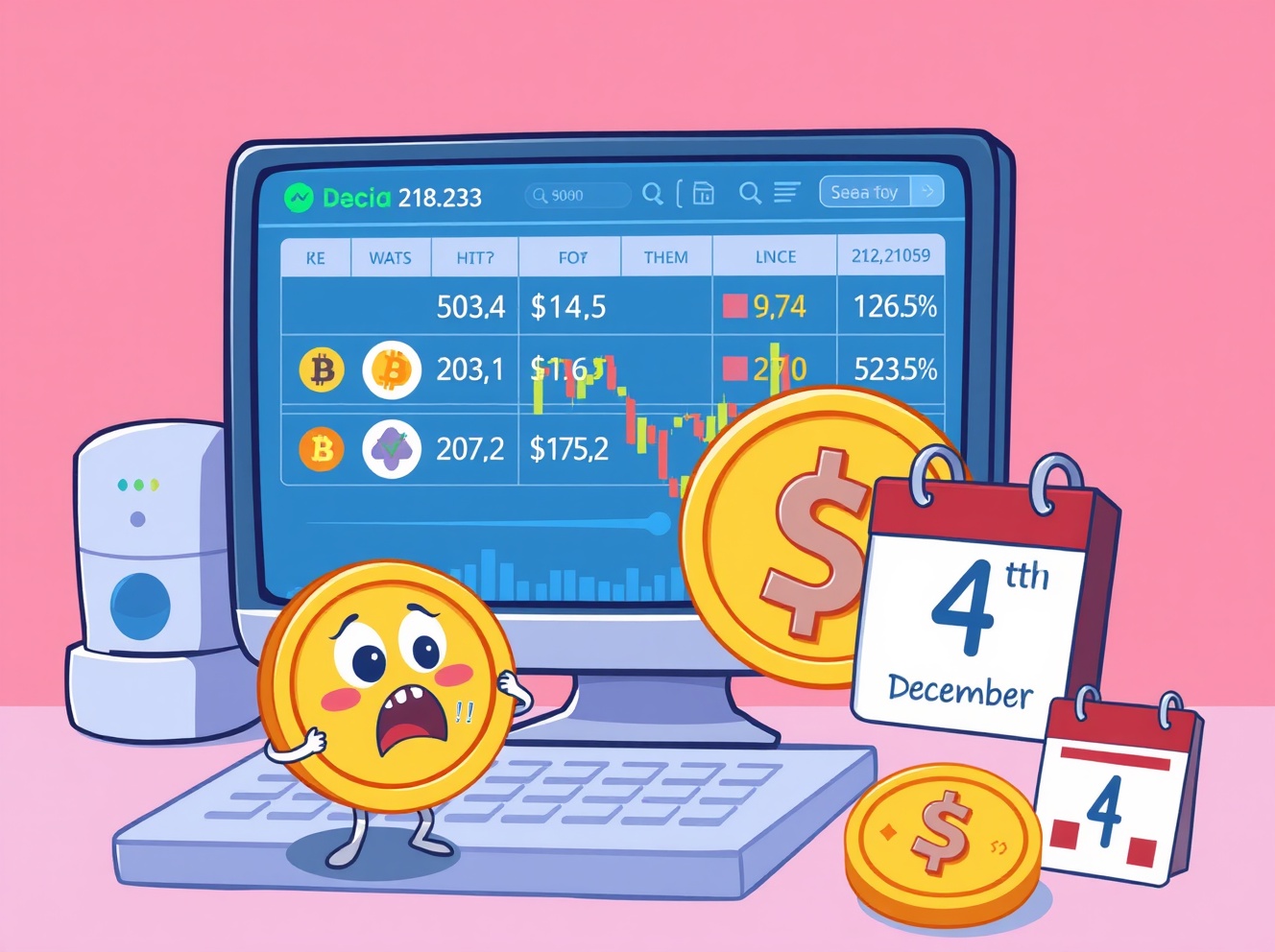Crucial Update: Binance Delists 18 Margin Trading Pairs – What Traders Must Know Now
0
0

BitcoinWorld

Crucial Update: Binance Delists 18 Margin Trading Pairs – What Traders Must Know Now
Attention cryptocurrency traders! Binance has just dropped important news that could impact your trading strategy. The world’s largest crypto exchange announced it will Binance delist margin trading pairs from its platform, affecting 18 different trading combinations. This move signals significant changes coming to the margin trading landscape.
Which Margin Trading Pairs Are Being Removed?
Binance confirmed the Binance delist margin trading pairs action will take place on December 4 at 6:00 a.m. UTC. The exchange is removing both cross margin and isolated margin pairs, primarily affecting Bitcoin trading pairs. This decision reflects the platform’s ongoing evaluation of trading pair performance and liquidity requirements.
The affected pairs include some well-known cryptocurrencies. For cross margin trading, the following pairs will be delisted:
- WAXP/BTC
- SXP/BTC
- ONT/BTC
- ID/BTC
- ZRX/BTC
- CHR/BTC
- ENJ/BTC
What Does This Mean for Isolated Margin Traders?
Isolated margin traders face even more changes with the Binance delist margin trading pairs announcement. The platform will remove these isolated margin pairs:
- WAXP/BTC
- ONG/BTC
- POWR/BTC
- SXP/BTC
- ONT/BTC
- ID/BTC
- AGLD/BTC
- ZRX/BTC
- CHR/BTC
- ENJ/BTC
- UMA/BTC
Why Is Binance Delisting These Trading Pairs?
Exchanges regularly review their trading pairs to ensure optimal market conditions. The decision to Binance delist margin trading pairs typically stems from several factors including low trading volume, liquidity concerns, or strategic repositioning. This helps maintain healthy markets and protects traders from potential slippage issues.
Moreover, such delistings often indicate the exchange’s focus on pairs with stronger performance metrics. Traders should view this as part of normal market evolution rather than alarm. However, it does require immediate attention to adjust trading strategies accordingly.
What Should Affected Traders Do Immediately?
If you currently hold positions in any of the affected Binance delist margin trading pairs, take these crucial steps:
- Close all open positions before December 4 deadline
- Transfer funds to other trading pairs or wallets
- Update your trading bots and automated strategies
- Monitor official Binance announcements for updates
Remember, failing to close positions before delisting could result in automatic liquidation by the exchange. Therefore, proactive management is essential to protect your investments.
How Will This Impact the Crypto Market?
The Binance delist margin trading pairs decision may create temporary price volatility for the affected cryptocurrencies. However, experienced traders understand that such routine adjustments are normal in evolving markets. The long-term impact depends on each project’s fundamentals and community support.
Interestingly, this move might redirect trading volume to other pairs, potentially benefiting remaining margin trading options on the platform. It also demonstrates Binance’s commitment to maintaining high-quality trading environments for its users.
Final Thoughts: Navigating Exchange Changes Successfully
The announcement to Binance delist margin trading pairs serves as an important reminder for all cryptocurrency traders. Staying informed about exchange updates and adapting quickly to changes separates successful traders from the rest. While such news might seem concerning initially, it represents the dynamic nature of cryptocurrency markets.
Always maintain diversified trading strategies and stay updated with official exchange communications. This approach ensures you can navigate market changes effectively while protecting your investment portfolio.
Frequently Asked Questions
What happens if I don’t close my positions before delisting?
Binance will automatically close any remaining positions in the affected pairs at the time of delisting. This could result in unexpected losses, so we strongly recommend closing positions manually.
Will these cryptocurrencies still be available for spot trading?
Yes, most of these cryptocurrencies will remain available for spot trading. The delisting only affects margin trading pairs against Bitcoin.
Can these pairs be relisted in the future?
While possible, there’s no guarantee. Exchanges may relist pairs if trading conditions improve significantly, but traders should not count on this happening.
How often does Binance delist trading pairs?
Binance regularly reviews and adjusts its trading pairs, typically making such announcements several times per year as market conditions evolve.
Should I be worried about other pairs being delisted?
Not necessarily. This is a normal part of exchange operations. However, always monitor official announcements and maintain diversified trading strategies.
Where can I get official updates about such changes?
Always check Binance’s official website and announcement channels for the most accurate and timely information about platform changes.
Found this information helpful? Share this crucial update with fellow traders on social media to help them stay informed about the Binance delist margin trading pairs announcement. Knowledge sharing helps build stronger trading communities!
To learn more about the latest cryptocurrency trading trends, explore our article on key developments shaping Bitcoin margin trading and institutional adoption.
This post Crucial Update: Binance Delists 18 Margin Trading Pairs – What Traders Must Know Now first appeared on BitcoinWorld.
0
0
 Manage all your crypto, NFT and DeFi from one place
Manage all your crypto, NFT and DeFi from one placeSecurely connect the portfolio you’re using to start.




